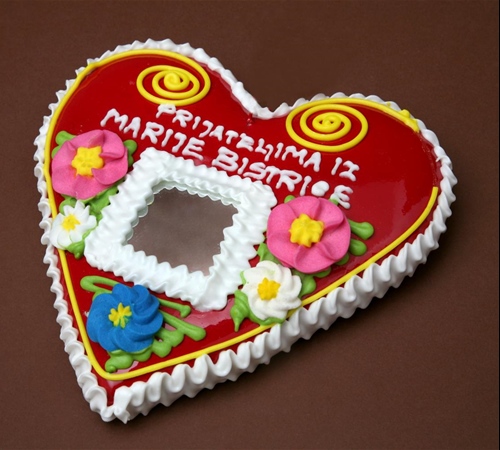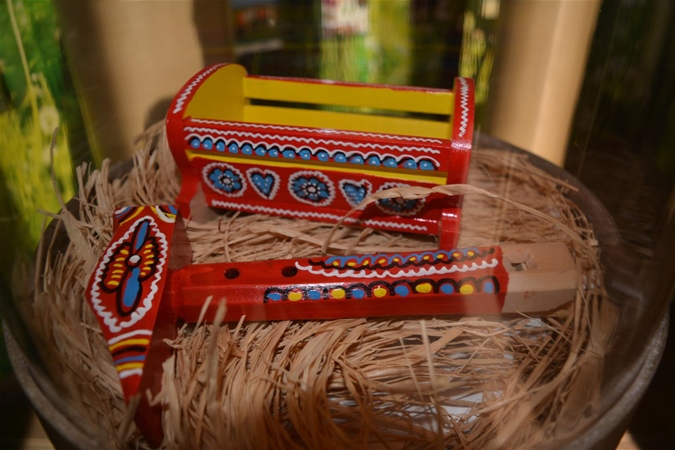Wooden toys are recognizable traditional products of Croatian Zagorje with a long history. Production started in the 19th century and remained until today. Production centres are places Bistrički Laz, Stubički Laz, Gornja Stubica, Marija Bistrica, Tugonica and Turnišće. There are several types of toys, such as wooden flute – “žvegla”, “clappers” – birds with wheels that are pushed on a stick, tamburitza, wooden animals, whistles, car models, trucks, trains, aeroplanes, children furniture for dolls and many others.

Production method has been transferred in certain families from generation to generation and remained until today. Specific to the production is that the toys are handmade by men, and painted mostly by women. Each toy is handmade and it is impossible to find two exactly the same. Toys are made from the wood of willow, maple, beech and lime tree. The wood is cut, dried, timbered and formed using moulds. The most common colours are red, blue, white and yellow, which is traditional fro wooden toys.

Toys are sold during church festivals, on fairs, markets, and mostly in the shrine of Marija Bistrica. The art of making traditional wooden toys from the area of Croatian Zagorje is listed on the UNESCO Representative list of intangible heritage of humanity in 2009, and is on the list of protected goods of intangible heritage in the Register of cultural goods of Republic Croatia.

Licitars are colourfully decorated cookies (gingerbreads) made of honey dough, which history dates back to the 13th century. They are traditionally in red colour, and produced in different shapes and sizes like hearts, babies, birds, horseshoes, wreaths, horses, mushrooms, a favourite ornament for Christmas trees in Croatian homes, and the bigger ones are intended for gifts for loved ones in special occasions. Once, the dough for licitar was pressed into handmade wooden moulds, and today it is formed in metal moulds, then baked, and finally painted with different colours (red, yellow, green, white) and decorated with white sugar mixture, small mirrors, etc.

The tradition of licitar production is listed on the UNESCO Representative list of intangible heritage of humanity in 2010. In Marija Bistrica you can visit the ethno collection of licitar craft that will take you through the history of licitar production, introduce you to the tools that were used long time ago, vocabulary that was used in licitar production, old techniques of the hand-production and almost forgotten products. Production of licitar can also be learned through a brief presentation of licitar-master, and in a workshop you can try the role of master-licitar.
More info: Visit Zagorje




